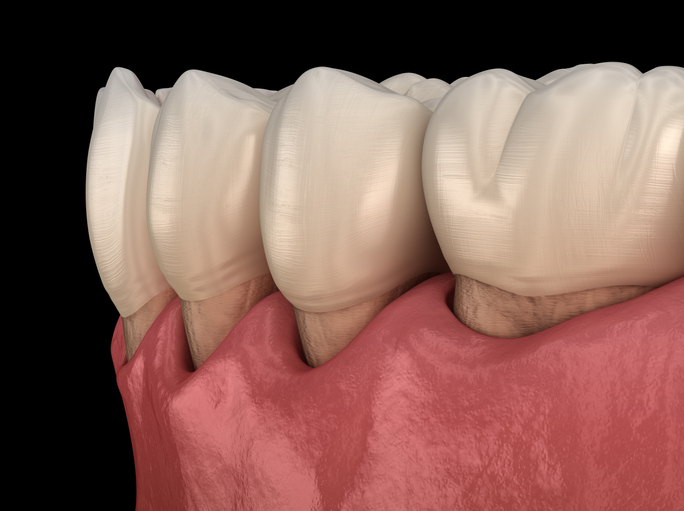
If you want to look after your teeth properly, then you’ll need to be aware of the possibility of gum recession. This common dental problem occurs gradually and can worsen if left untreated. Many patients do not know the details, causes and initial symptoms to watch out for, so let’s consider some frequently asked questions.
What is gum recession?
Gum recession is a when the gum tissue around the teeth begins to wear away. This process results in more of the tooth or even the root becoming exposed. Gaps form between the gum line and the teeth so that it’s easy for bacteria to grow here. Gum recession can result from periodontal disease, also known as gum disease.
What causes it?
Gum recession can occur due to a variety of causes. If you develop periodontal disease, this can irritate your gums and cause recession. Poor oral hygiene can be another factor in contributing to periodontal disease, yet it is still possible to have receding gums due to other issues. If you brush your teeth aggressively, this can cause the gums to recede. Oral piercings or misaligned teeth can also contribute to problems with receding gums. Simple factors such as aging can also cause minor gum recession to become more prominent.
What are the symptoms?
One of the earliest symptoms of receding gums is that your teeth are more sensitive than usual, particularly to cold or sugary food or drinks. You will also notice that your gums become inflamed and red. You may notice some bleeding when brushing your teeth. If you notice that your teeth appear discolored, or start to look longer, these are further signs that your gums may be receding. Finding a small notch in your mouth where your gums meet your teeth is another sign to look out for.
What are the treatments?
In the early stages, gum disease is called gingivitis and results in bad breath and red or bleeding gums. At this stage, you can use an antibacterial toothpaste and make sure that you brush and floss regularly. You could also have your teeth professionally cleaned; the dentist will be able to remove the plaque build-up which contributes to gingivitis. If symptoms become more severe and persist, there are a few treatments available. The newest procedure is the Pinhole Surgical Technique. This procedure relies upon a careful repositioning of the gums to cover the teeth and roots that have become too exposed. The Pinhole Surgical Technique is a less invasive method compared to more traditional gum grafting procedures.
Why is treatment important?
The gaps between your teeth and gums mean that you are more prone to bacterial infections. Cosmetically speaking, you may dislike how gum receding alters the appearance of your teeth and mouth. You may also find it more difficult to eat certain kinds of foods due to sensitivity. In the most severe cases, gum recession can result in tooth loss or root damage. If you notice that gum recession has begun, it’s vital to schedule an appointment and get some advice. We at The Perio Group will be able to discuss prevention or gum recession treatment if necessary.
